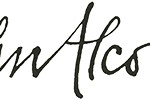During the Sixties, Alcorn illustrated numerous books for children in which he again demonstrated his independence of design and his disregard for trends and fashions.
The first of these books are particularly close to his commercial production, from the point of view of both style and themes. Books! and The Abecedarian Book were aimed at adults and children alike, and closely related to the artist’s interest in typography, while the illustrations, as full of meticulous details as ever, are similar to those used at the same time in his freelance work.
More obviously aimed at children are the three books published by Al Hine – Where in the World Do You Live?, Money Round the World and A Letter to Anywhere. These books express the curiosity typical of children (the world, money, means of communication) through a circular narrative structure that strives to simplify universal issues from the starting point of the facts.
Together with children’s writer Sesyle Joslin, whose stories at this time were mainly illustrated by Maurice Sendak and Leonard Weisgard, Alcorn designed two books for language teaching (French and Spanish) – La Petite Famille and La Fiesta – in which the illustrations go hand in hand with the text, gradually introducing new objects in an elementary but very effective film-like sequence.

